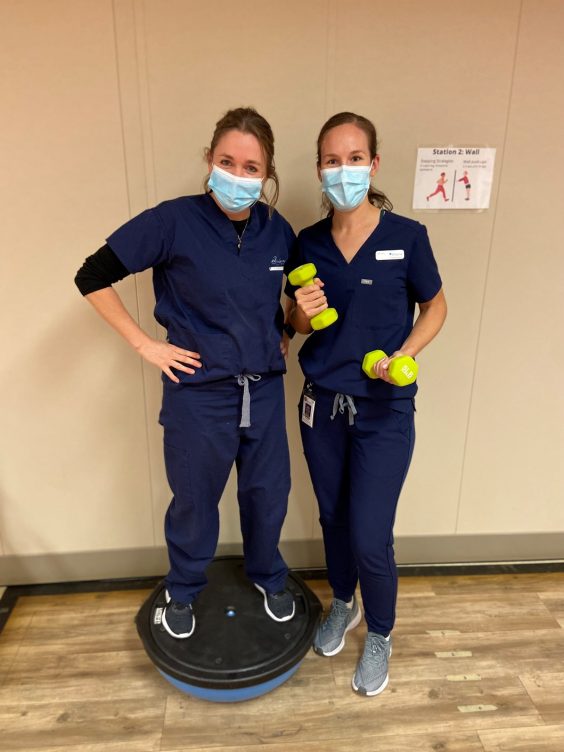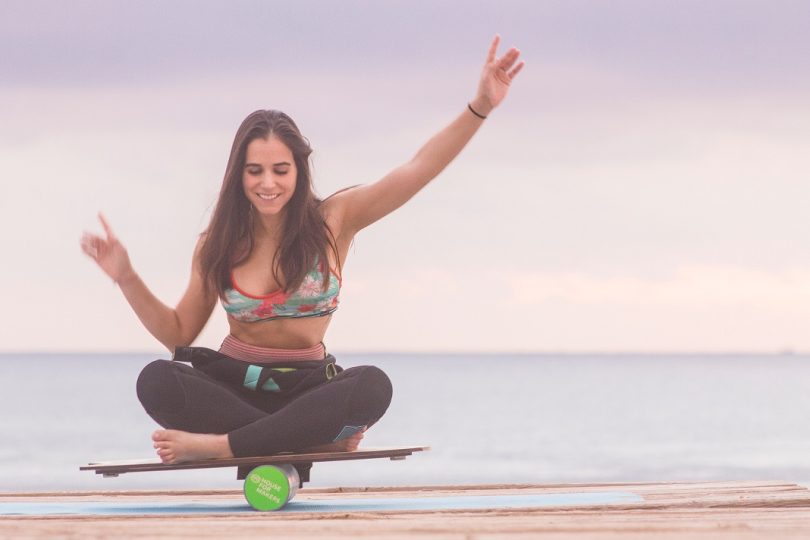November in Canada marks Fall Prevention Month; here are some tips to get you balanced.
Falls are the leading cause of injury in older adults and can even be a matter of life and death. But as Providence Health Care physiotherapists Susanna Johnston and Shauna Gould explain, there are things you can do to get balanced.

First, some facts on falls in Canada:
- About one third of older adults have a fall each year.
- In 2019/2020 34 per cent of fall-related hospitalizations involved a hip fracture.
- In 2019 alone 5,581 older adults died as a result of a fall.
While lack of balance is more common in older adults, you’re not in the clear if you are under 65. Balance is an issue for people of all ages.
Are you feeling a little unbalanced?
In order to balance, our visual, sensory and vestibular systems provide our brain with information about where we are in space and what is happening as we move through the world. Our brain then processes the information, and our eyes, muscles and joints all work together to keep us upright.
Because of the many bodily systems involved, physical health plays a large part in balance. “Issues with vision, sensations in the legs (like neuropathy), vestibular issues (like dizziness), muscle strength/weakness and flexibility, can all lead to impaired balance,” say Johnston and Gould.
How do you know if your balance might be declining? Some early signs include:
- Having or nearly having a fall.
- Feeling unsteady when reaching for things or when picking things up off the floor.
- Feeling as though you need to hang on to something when standing or walking.
- Needing to push up from a chair when going from sitting to standing.
- Feeling generally cautious or unsteady when walking on an uneven path.
- Feeling more unsteady when it’s dark out.
Still not sure where you stand? There’s a test for that.
For a quick and easy check of your static balance—your ability to stay upright—you can try out the one-legged balance test.
First, find a safe area free from tripping hazards, but with something to hold onto nearby (think a railing or a wall). Then lift one leg off the floor and attempt to balance for 10 seconds. Repeat this twice more and record your longest time.
If you pass the 10-second mark, you’re balanced, and if you didn’t quite make it, there may be some work to do.
While this test doesn’t evaluate your dynamic balance—your ability to keep stable when moving about—Gould and Johnston say it’s a good place to start.
Tips to keep you on the level
If you didn’t pass the 10-second mark, there are steps you can take to up your balance game.
Both Johnston and Gould agree you should be working on your balance regularly—at least three times a week—and the easiest way to make sure you stick to it is to make it fun, social and easy to fit in to your daily routine.
“They don’t have to be specific balance exercises, you can incorporate them into your regular exercise routine. Activities like yoga and tai chi, strength movements like squats and lunges, or things like walking on trails, going lawn bowling, playing golf, dancing or playing pickleball are all great options” says Gould.
Johnston adds it shouldn’t take long for you to see results.
“For those who do their exercises regularly, they often start feeling some improvement right away.”
When to see a professional
If after incorporating balance exercises into your daily life you’re not seeing the changes you’d like, it may be time to see a professional.
“We’d definitely recommend being assessed by a physiotherapist,” say Gould and Johnston. “You can find a physio on the Physiotherapy Association of BC website and select ‘vestibular’ from the drop down to ensure you see those focused-on balance. By seeing a physio, you can get a full assessment and specific exercises or advice for what is causing your imbalance.”
That said, as with most things, if you notice a sudden change see your doctor.
“Medical conditions like strokes, high or low blood pressure and dehydration can all cause balance issues. And if you’re taking any new medication and feel your balance has worsened, speak to your pharmacist or doctor about your options.”
Preventing falls at home
When balance and mobility problems pop up, trips and falls are more likely to occur. But many folks don’t realize the full spectrum of potential household hazards that can increase the likelihood of a stumble. With that in mind, NCOA created this guide, Home Safety for Older Adults: A Comprehensive Guide.
This piece includes a wide variety of practical tips and recommendations from senior safety experts, including:
- Seasonal and material considerations for exterior home safety
- Suggestions for accessibility of everyday items
- Products to help older adults age in place safely
Plus, there is an actionable PDF checklist that readers can use to ensure they or their loved ones remain safe at home.





